| Lesson Downloads • "Kong Newman Rag" Printable PDF • "Kong Newman Rag" MP3 Audio |
As I’ve mentioned before, the line between composing and arranging is very thin. That line becomes closer as the level of arranging magnifies. The harmonic examples will be listed as Levels 1 and 2. Level 1 is the most surprising to the ear, and while Level 2 will not be as shocking, it still adds interest to a musical passage that might otherwise have been more predictable. Bullet points are given for easy reference.
Level 1:
• Measure 12 offers our first big harmonic surprise as the song moves from the key of C major to Db major. Moving up a half-step is not uncommon or that surprising, yet the transition that happens here is. Notice the B7/A moving to Ab7 (the new V chord). Check out the contrary motion between the bass and melody while the middle notes of the two chords are stable. They are tones common to both chords. It always sounds good when you can move the top, bottom, or middle voices while keeping one or more notes as common tones. The common tones can also be in any voice or combination of voices. In my opinion, the chord change in measure 12 works because it is closely related in sound to Em7b5 moving to Ab7 (ii–V). This harmonic movement repeats in measure 44.Level 2:
• The next big surprise starts in measure 19 and reaches its finale at measure 21 as we move into the key of Gb. This series of chords is basically a ii–V–I in Db, which would be Bbm–Eb7–Db. However, I have replaced Eb7 with A7b5 and Db has been replaced with Dbm7b5. The latter is not only surprising, but it works well to move us into the key of Gb major for the tune’s B section. Although this is not a true V–I movement, it works because of the strong voice leading. Again, notice the contrary motion.
• Measure 18 basically outlines the sound of Gb major to Gb minor. However, I wanted to not only move the bass line, but also outline the sound without being predictable. In this case, I’ve moved from Gb to Gbm6 with Bb in the bass. You can also think of this chord as an Ebm7b5 with the b5 in the bass. To tell the truth, this is how I most often think of it.Rhythmic Surprise
• Measure 24 moves from Gb to Db+. This is a harmonic device I’ve often heard Randy Newman use. It certainly fits the style.
• Measure 26 is basically the same as measure 18, but this time the Ebm7b5 is approached from Bbm instead of Gb. It is really the same sound with a different approach. Bbm is really just an extension of Gb major.
• Measure 33 has an interesting chord substitution in the second half of the measure. The typical boring IV to iv minor is replaced with IV to #V7. The Cb is the IV chord in Gb, which leads to D7—the #V of the home key (Gb). Note that the D7 has an A in the bass and is played on the upbeat of beat 2. This works as a substitution for the iv minor, because you still have the Eb melody moving down to D, which sounds like a major 3rd moving to a minor 3rd. I have heard this chord change in early 20th-century music before, but I’m not sure where.
• Measure 34 is based around the expected sound of Bbm7 to Eb7 (iii –VI7) in the key of Gb. In this case, the surprise happens when Cb7 with the b7 in the bass replaces Eb7. The b7 in the Cb7 gives use a nice half-step movement into the following Abm7 in measure 35.
• Measure 40 moves from C7–B7–Bb13 and then resolves to A7 in measure 41. This is the same harmonic makeup as measures 8 and 9. The surprise comes in measure 40 when I play B7 with D# in the bass and the melodic line moves up in pitch instead of down on both the B7 and Bb13 chords.
• A bit off the subject, but notice the melodic variation in measure 38 compared to measure 6.
In its simplest form, rhythmic surprise happens when the melody, bass notes, or even whole chords are pushed or anticipated ahead of the downbeat. When rhythmic surprise is mixed with harmonic surprise, it is always a winning combination.
• Pushed bass notes are first seen in the four-measure introduction. Notice that each pushed bass note is tied over the barline. Often, though not in this piece, I will push the bass note and cut it off on the downbeat. This is a common technique in jazz. Remember harmony only needs to be implied. Other pushed bass notes can be found in measures 20 and 36. Notice measure 36 is in 2/4. This also adds to the rhythmic and harmonic surprise of moving from Gb major to C major in measure 37.In conclusion, I want to make it clear that there is a time for analyzing and a time to just play without over-thinking. I have found that for the most part, if you trust your ear it will not let you down. Most likely, it will surprise you.
• An example of a pushed bass in combination with a pushed melody can be seen in measure 33 on the upbeat of beat 2.
• Whole chords are pushed in measure in the following measures:
o 32 on the upbeat of beat 4
o 42 on the upbeat of beat 2
o 47 on the upbeat of beat 2
o 48 on the upbeat of beat 2
• Two-note pushes can be found in measures 2, 3, 4, 12, 24, 26, 35, 44, and 45. See if you can spot them.
Enjoy the arrangement on page 2...
Download arrangement audio...
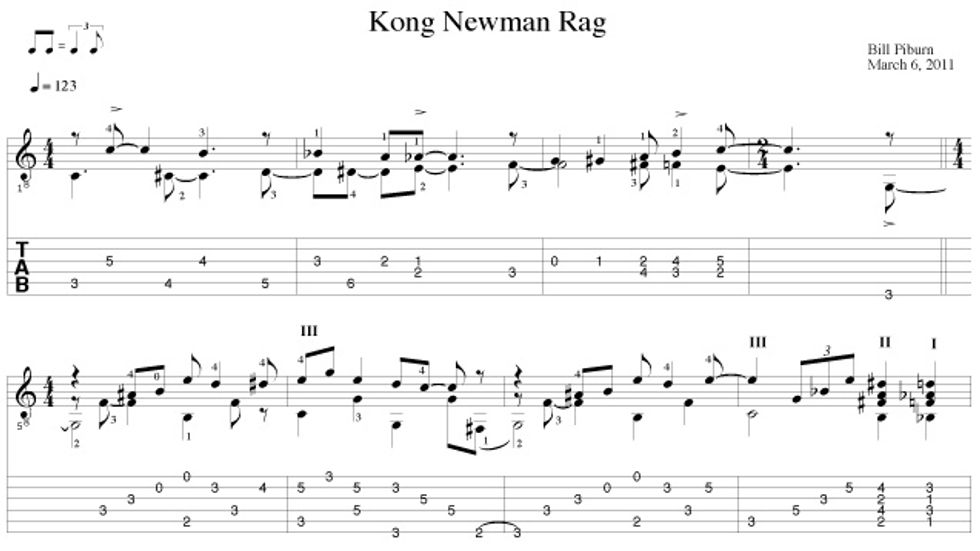
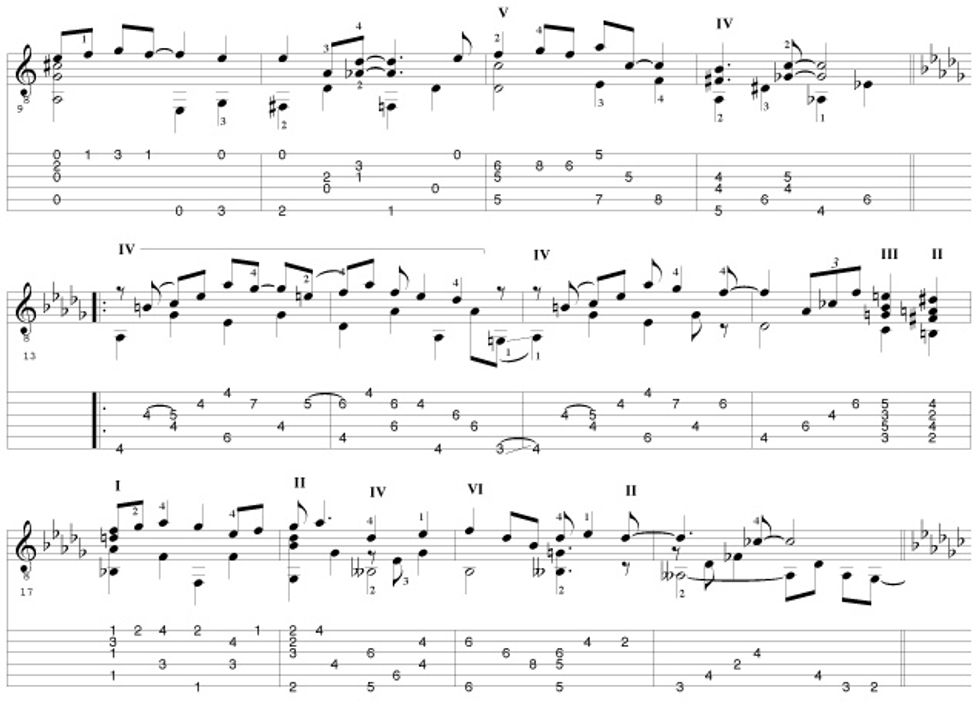
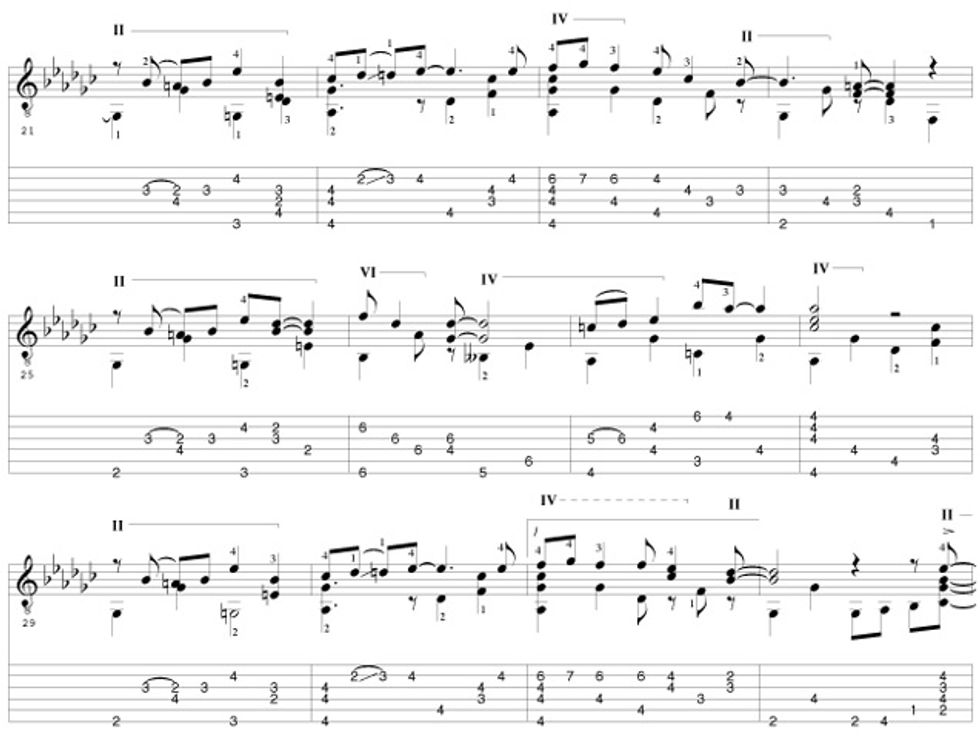
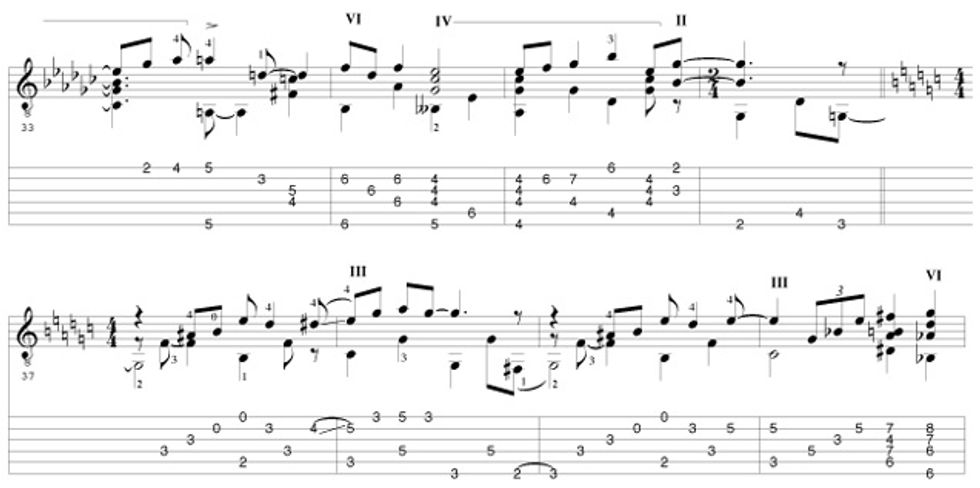
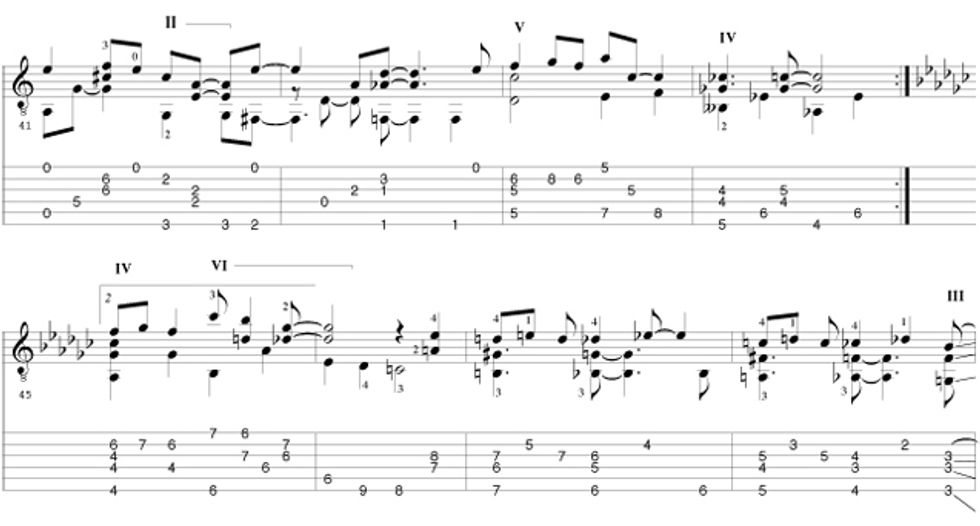
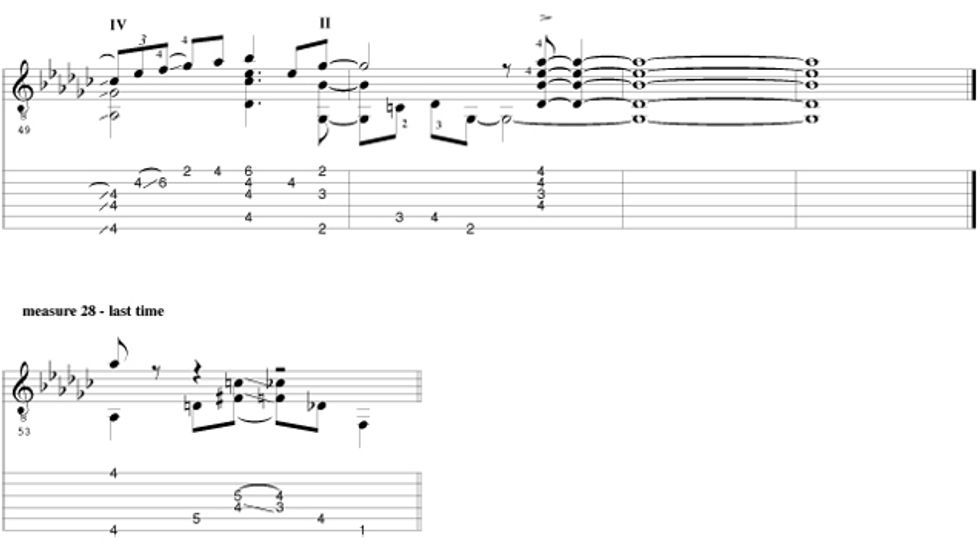






![Rig Rundown: Russian Circles’ Mike Sullivan [2025]](https://www.premierguitar.com/media-library/youtube.jpg?id=62303631&width=1245&height=700&quality=70&coordinates=0%2C0%2C0%2C0)

















